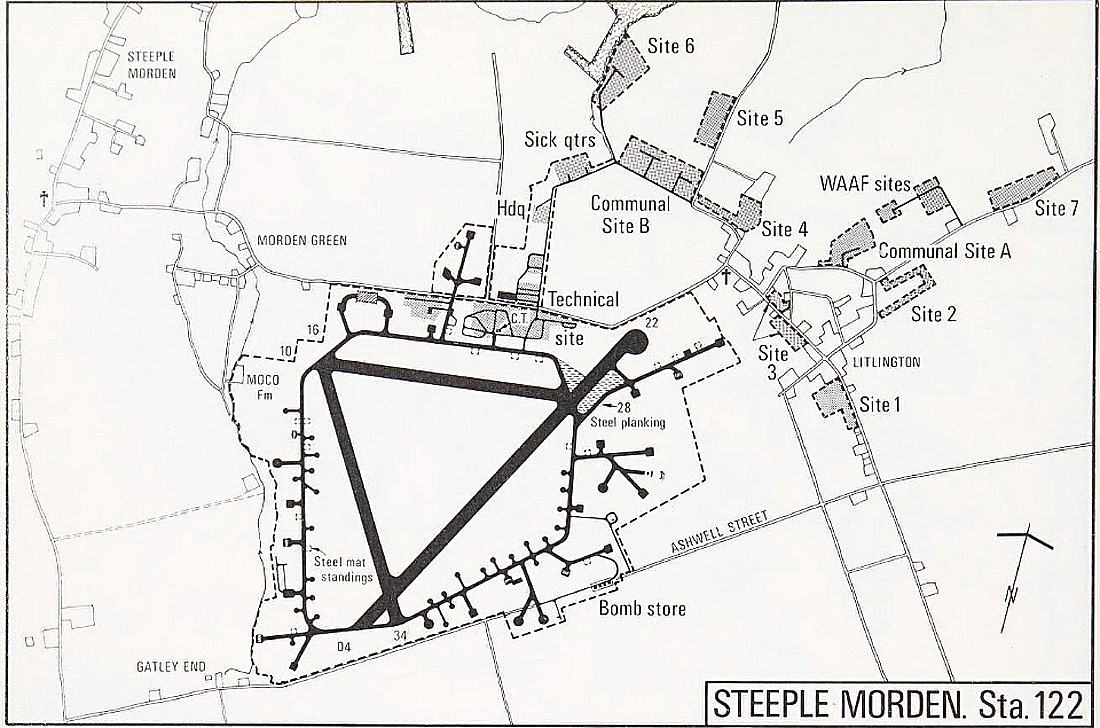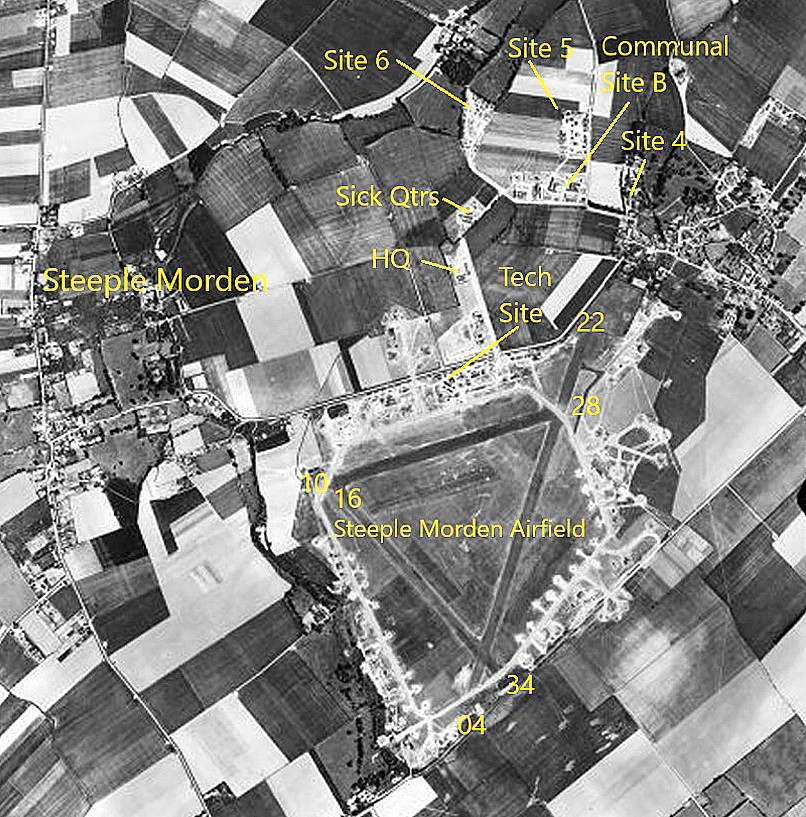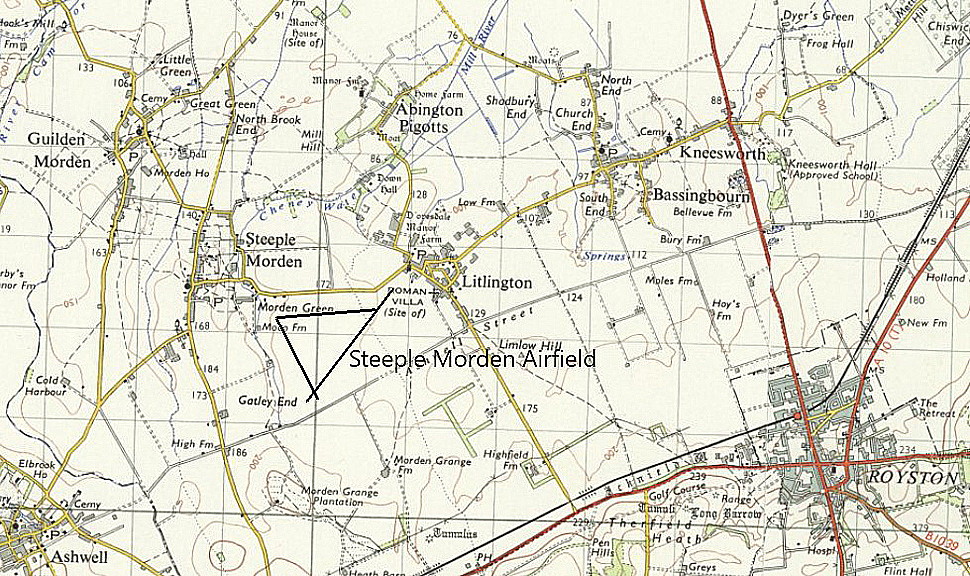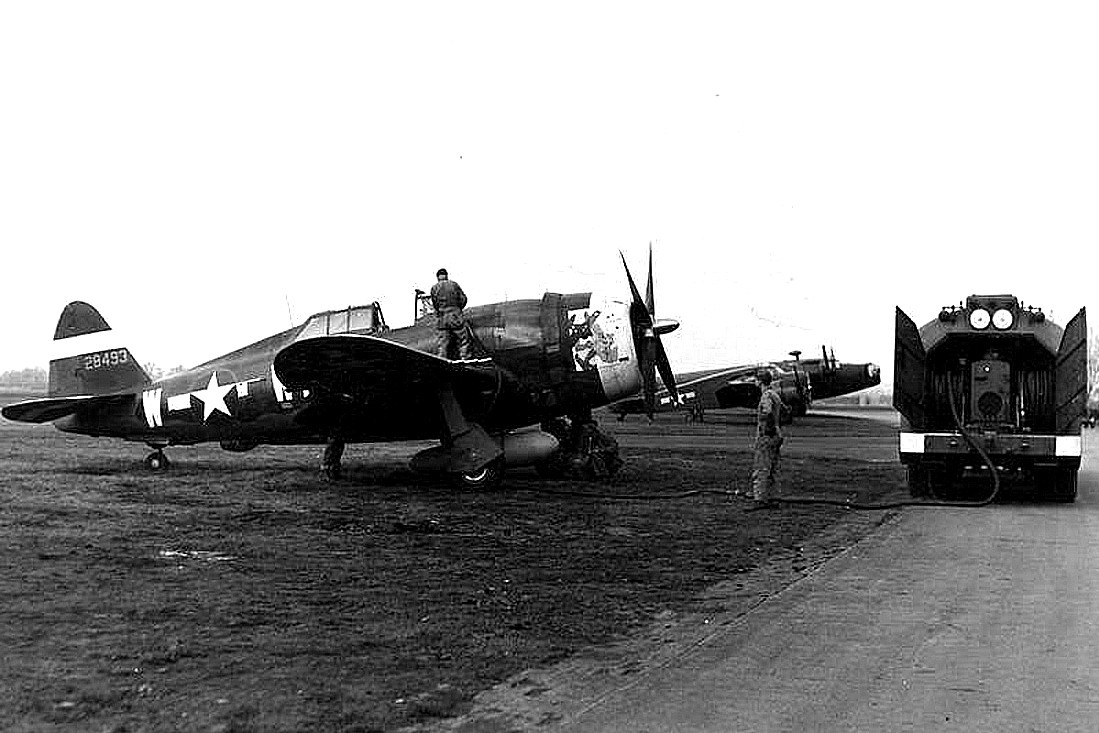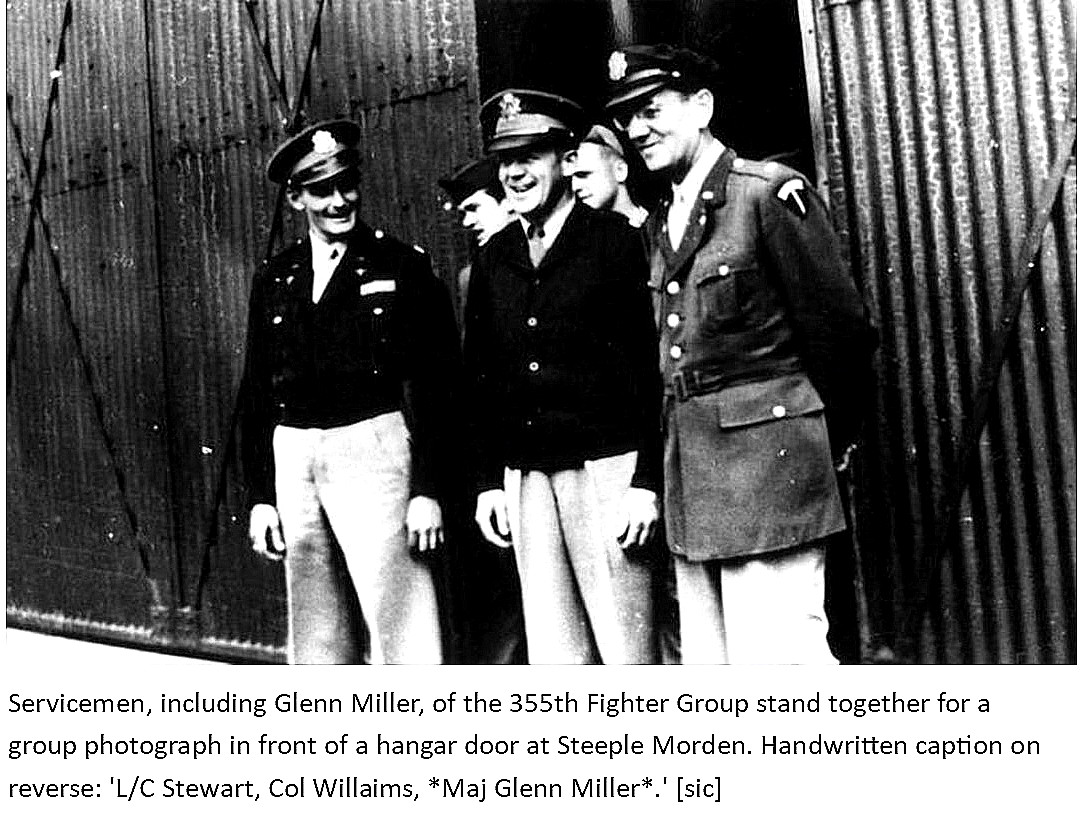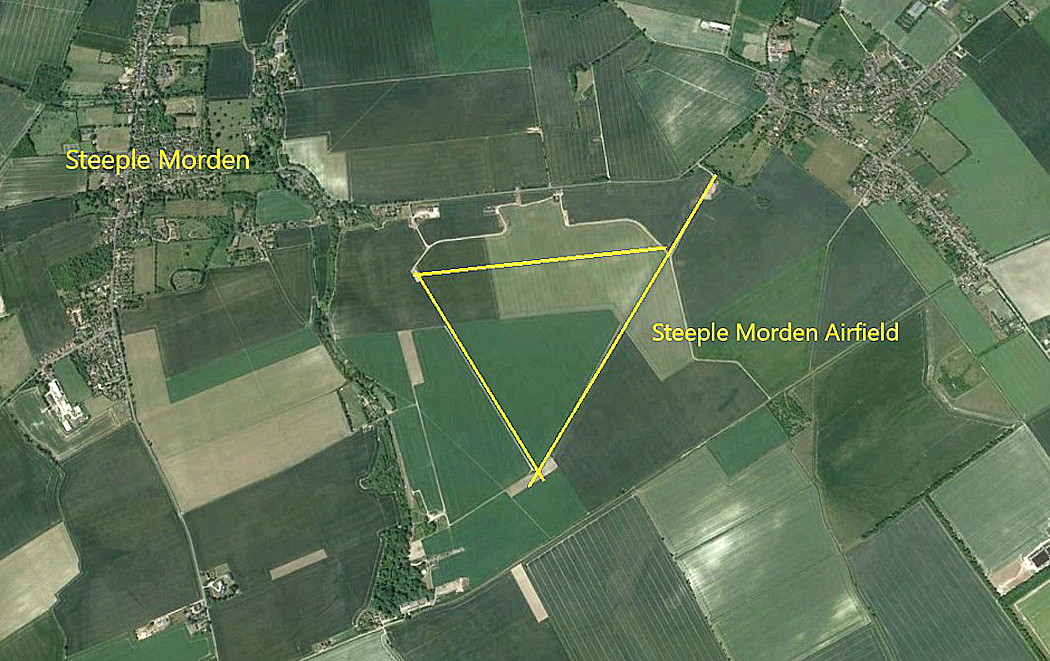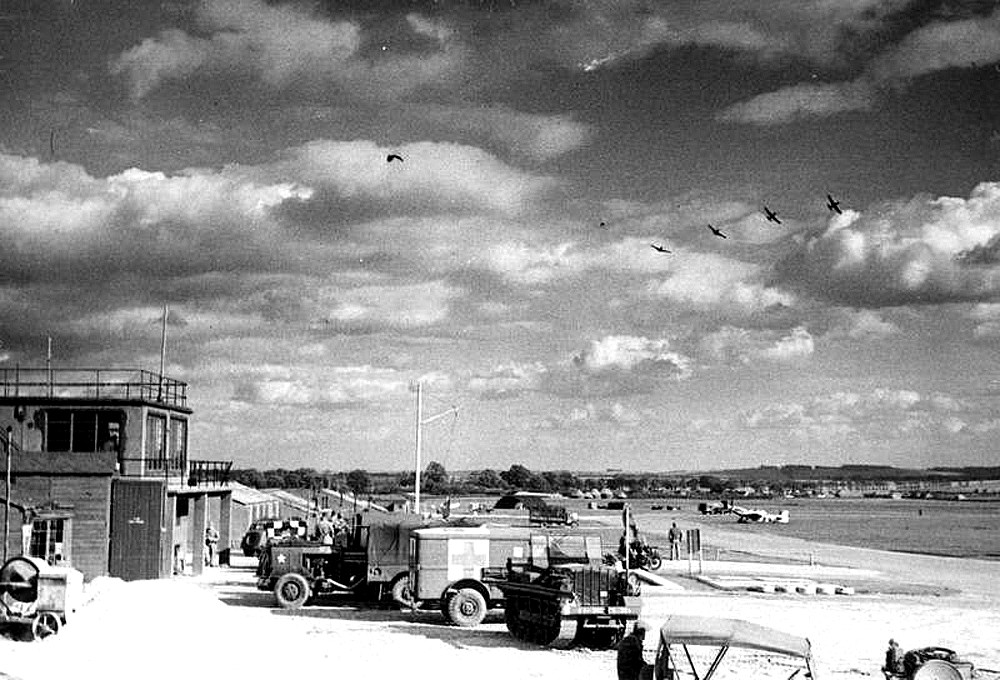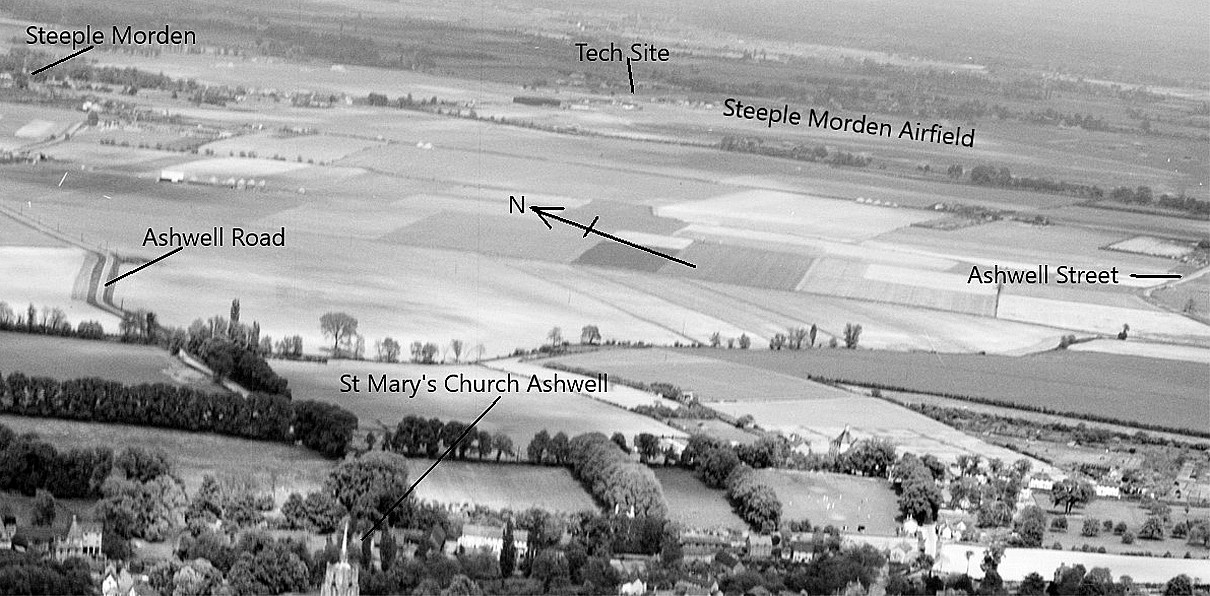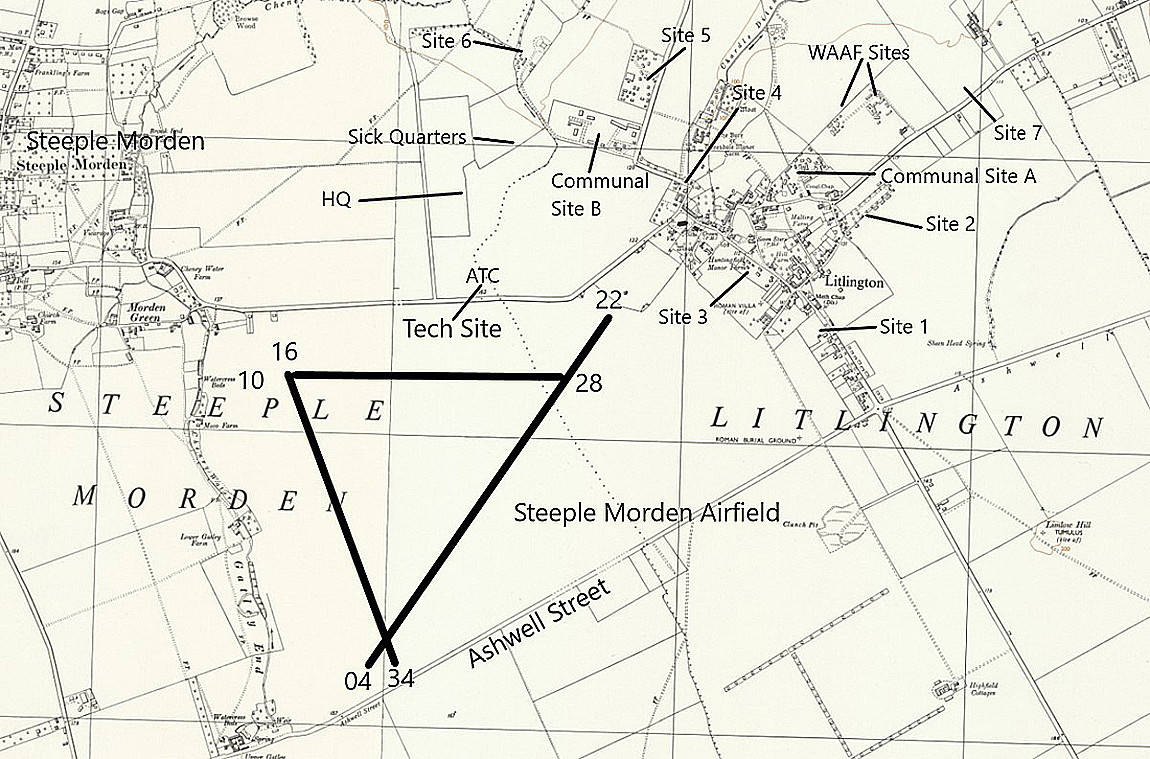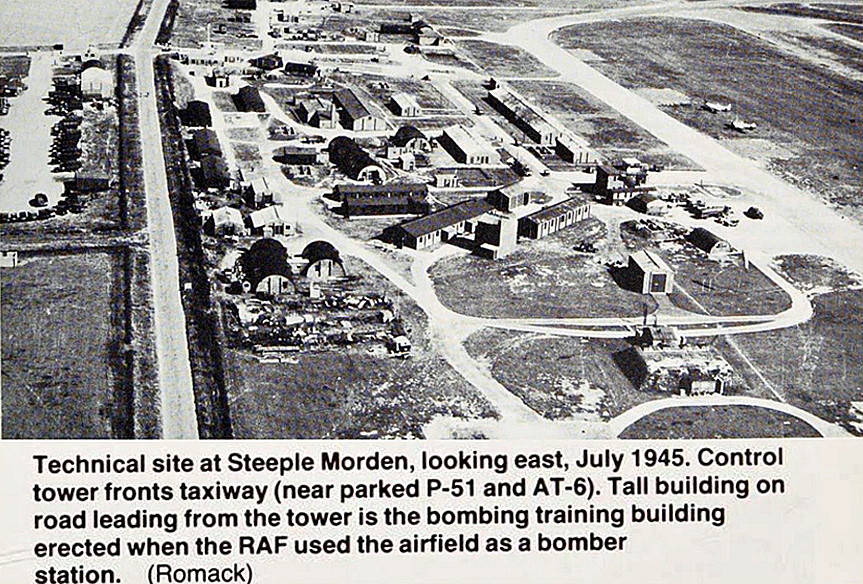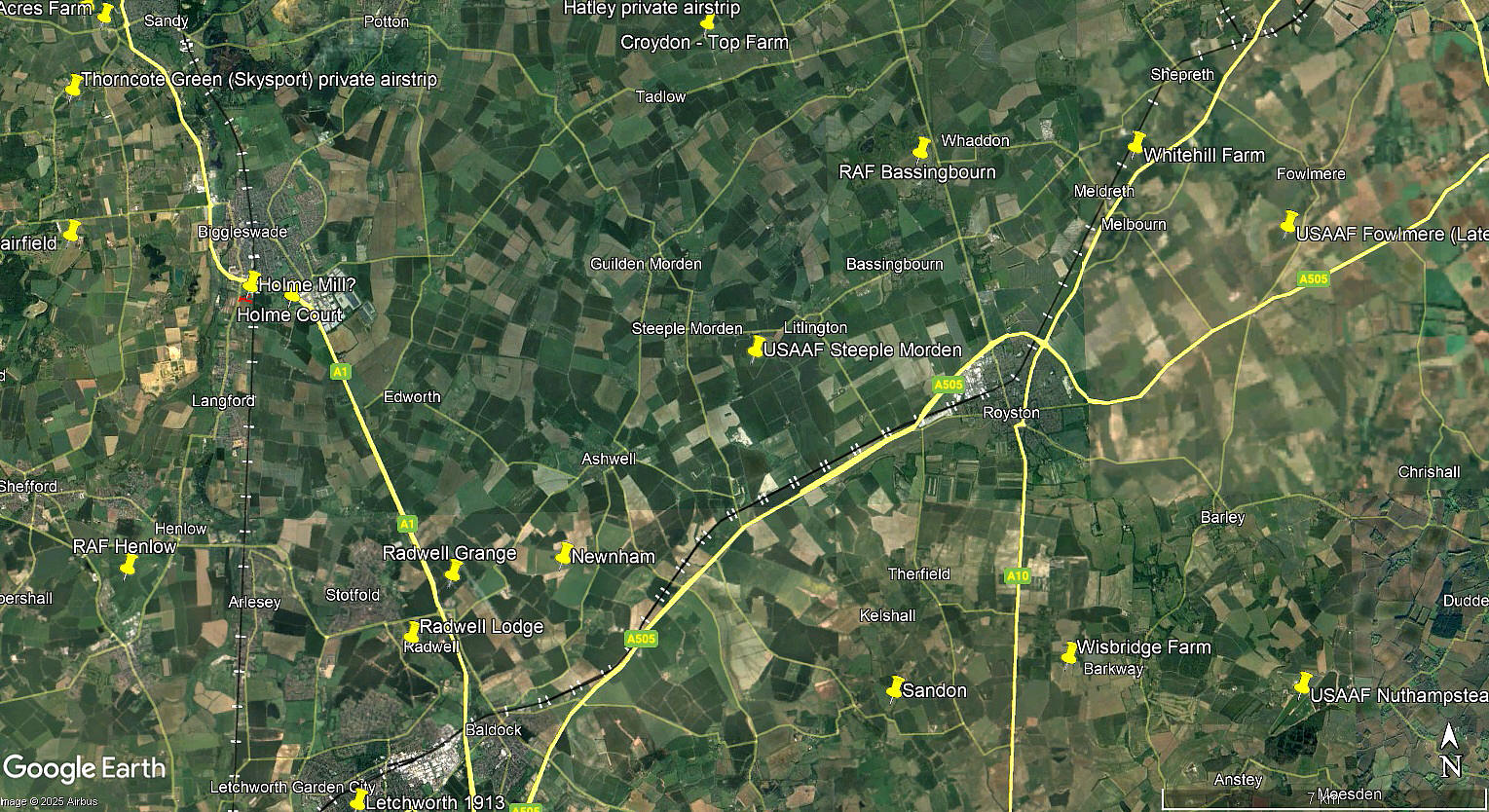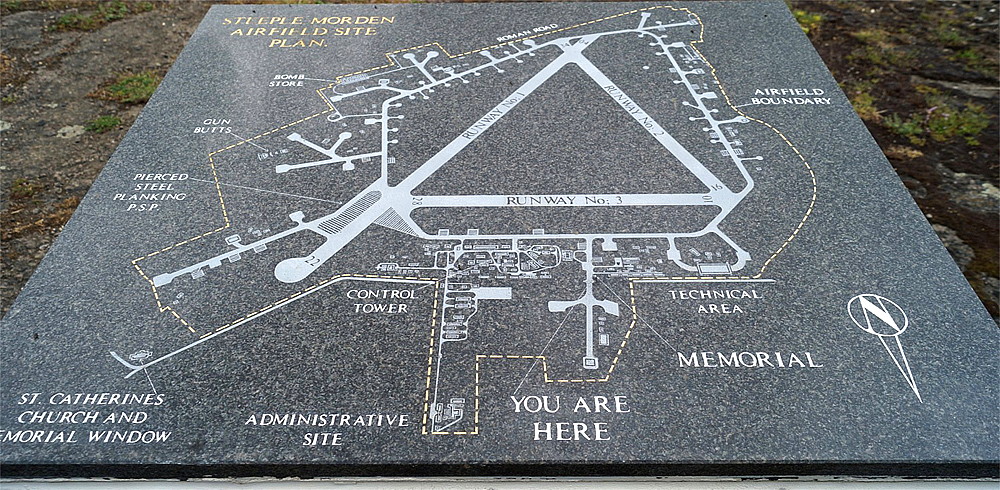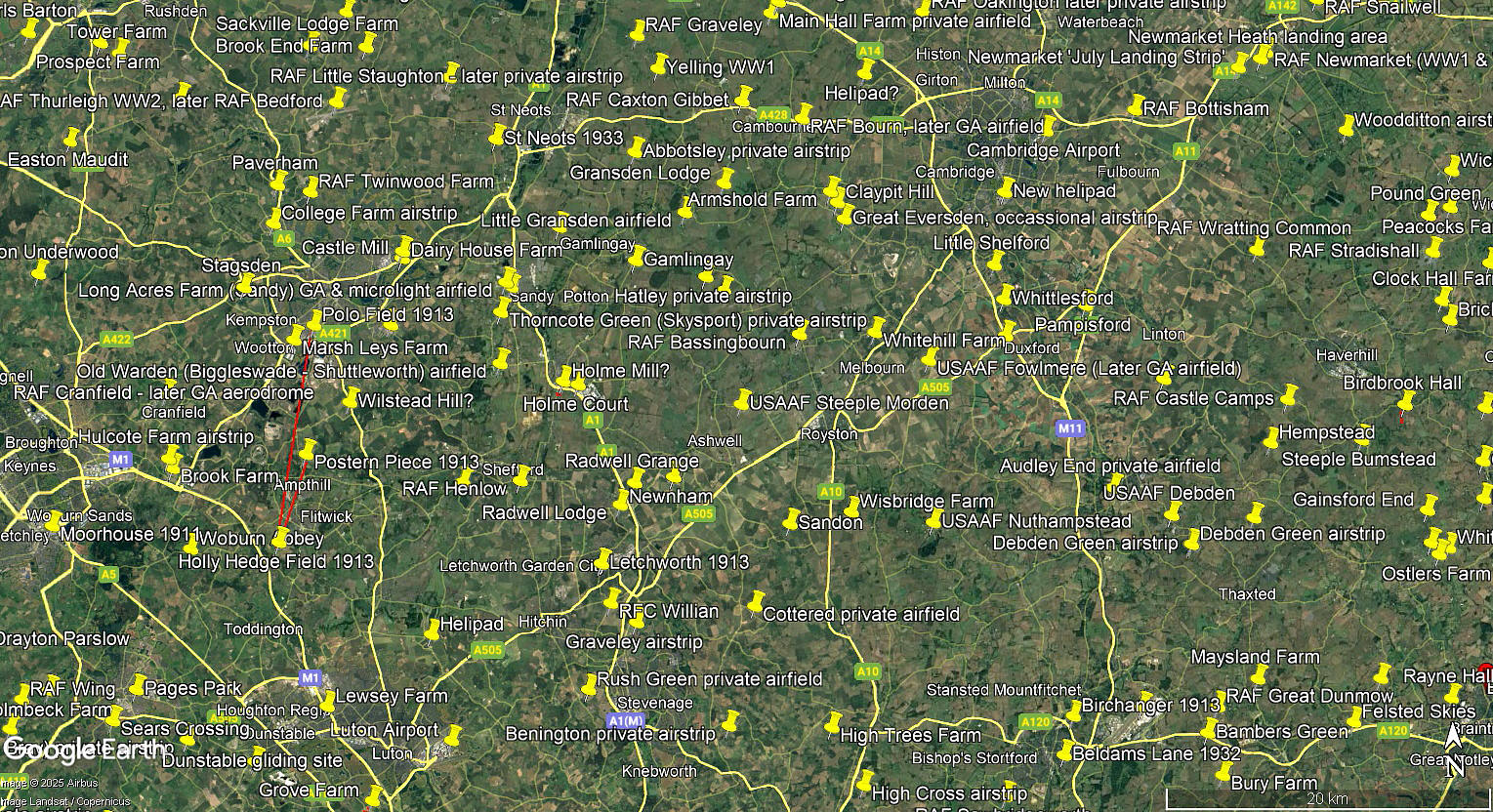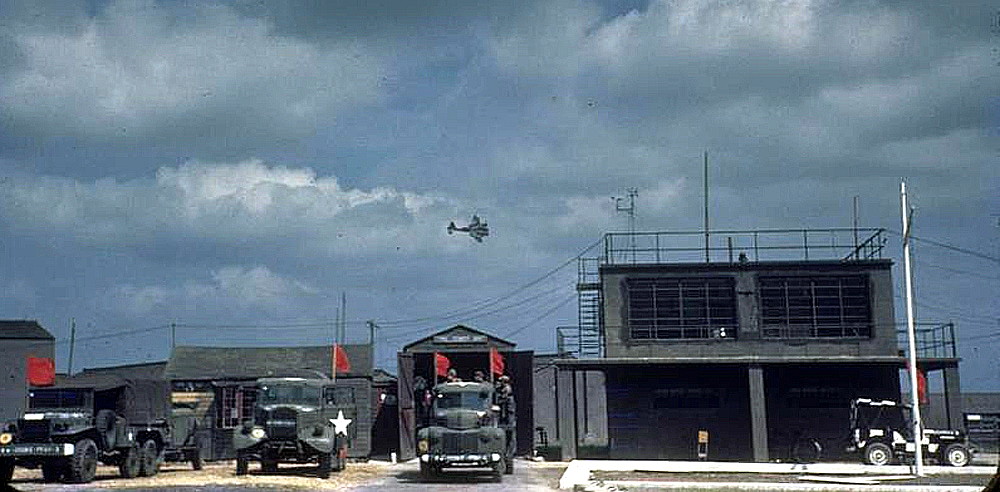Steeple Morden
STEEPLE MORDEN: Military aerodrome
Military users: RAF Bomber Command (Dispersal aerodrome for RAF BASSINGBOURNE)
No. 11 OTU [Operational Training Unit] (Vickers Wellingtons)
RAF Coastal Command 7 Group
No.3 (Coastal) OTU (Vickers Wellingtons)
Note: 1942 the RAF moved out to be replaced by the USAAF (United States Army Air Force). It was during this USAAF period that the three hard runways were constructed, plus hardstands.
USAAF 3rd Photographic Reconnaissance Group
Consisting of the 5th,12th, 13th, 14th, 15th and 23rd Photographic Reconnaissance Squadrons. Type or types unknown?. Looks likely that, at least the Lockheed P-38 Lightning was involved. Also tt seems that only the 12th Squadron were based here.
2nd note: It then appears that, in January 1943, the RAF moved in once again. But only until April.
17 OTU (Bristol Benheims - bomber version)
8th USAAF 65th Fighter Wing 355th Fighter Group
354, 357 & 358 Sqdns (Republic P-47 Thunderbolts - later - North American P.51 Mustangs)
2nd Scouting Force
3rd Note: I imagine that they used Thunderbolts? Flying ahead of the bomber formations and sending weather information and enemy aircraft positions. No doubt very hazardous missions.
USAAF 4th Fighter Group
334th, 335th and 336th Fighter Squadrons (Aircraft flown not known? Would guess at P-51D Mustangs)
4th Note: The 4th Fighter Group arrived in or around July 1945 after the 355th had departed for Germany. But only stayed until November.
Location: SE of Steeple Morden & SW of Litlington villages, 3nm W of Royston
Period of operation: 1940 to 1946
Runways: 04/22 1463x46 hard 16/34 1006x46 hard
10/28 983x46 hard
A MICHAEL T HOLDER GALLERY
As so often in this 'Guide', we once again have Mike Holder to thank for investigating what might be available to illustrate this listing and providing the captions and maps.
The 1944 aerial vertical is from the Imperial War Museum.
This picture, from the American Air Museum, I found very interesting, suggesting to me that the handover from the RAF to the USAAF may not have been as clear cut, as in vacant possession, as might be supposed? Presumably at an early stage as the aircraft are not on hard standings. Although said to be of 355th ground crew refuelling the Thunderbolt, I think I'll question this. Suggesting it is possible that this was during the arrival of the 3rd Photographic Reconnaissance Group?
Why? Simply because, apart from the Thunderbolt, (42-8492), being on grass with a Cessna UC-78 Bobcat beyond - behind that is a RAF Vickers Wellington! Perhaps from one of the RAF OTU's based here? One quite important aspect of this 'Guide', often pleasurable too, is to provide questions rather than attempting to supply definitive solutions. Which of course as so many historians these days point out, is by no means a sensible approach to history.
For Photo Two see caption. Photo Three from the American Air Museum, date unknown, shows P-51 Mustangs breaking from formation before coming into land.
So nice I think to see an example such exubruiance during wartime.But of course, at this stage in WW2, the Americans quite rightly could see themselves as being 'knights to the rescue'.
Photo Four shows STEEPLE MORDEN in the background. Photo Five, an aerial view of the Technical Site is from the Mighty Eighth War Manual by Roger A Freeman.
The local area and area views are from my Google Earth © derived database. Please note that not by any means are all the listings in this 'Guide' pinned on my database.
I am not much inclined to be patriotic having learnt over the years something about our historical heritage - certainly not so much to be proud of. BUT, this slightly out of focus picture from the American Air Museum, does get my few remaining patriotic juices flowing thanks to that Mosquito pilot. Imagine that he was proving the point that the RAF had an aircraft, the Mosquito, that could by far out-perform in its class, anything the Americans had - and - made out of wood!
NOTES: I have flown over this site many times and very little now appears to remain to bear witness to the fact that late in 1944 the USAAF had 1959 personnel stationed here. Indeed, in many ways, seeing so little remaining, provided me with the idea of getting a 'GUIDE' project going, now over a quarter of a century ago.
We'd love to hear from you, so please scroll down to leave a comment!
Leave a comment ...
Copyright (c) UK Airfield Guide















